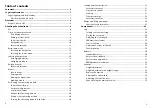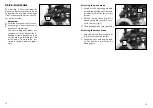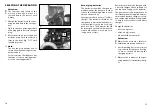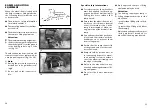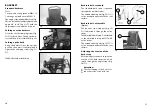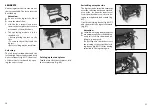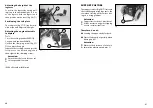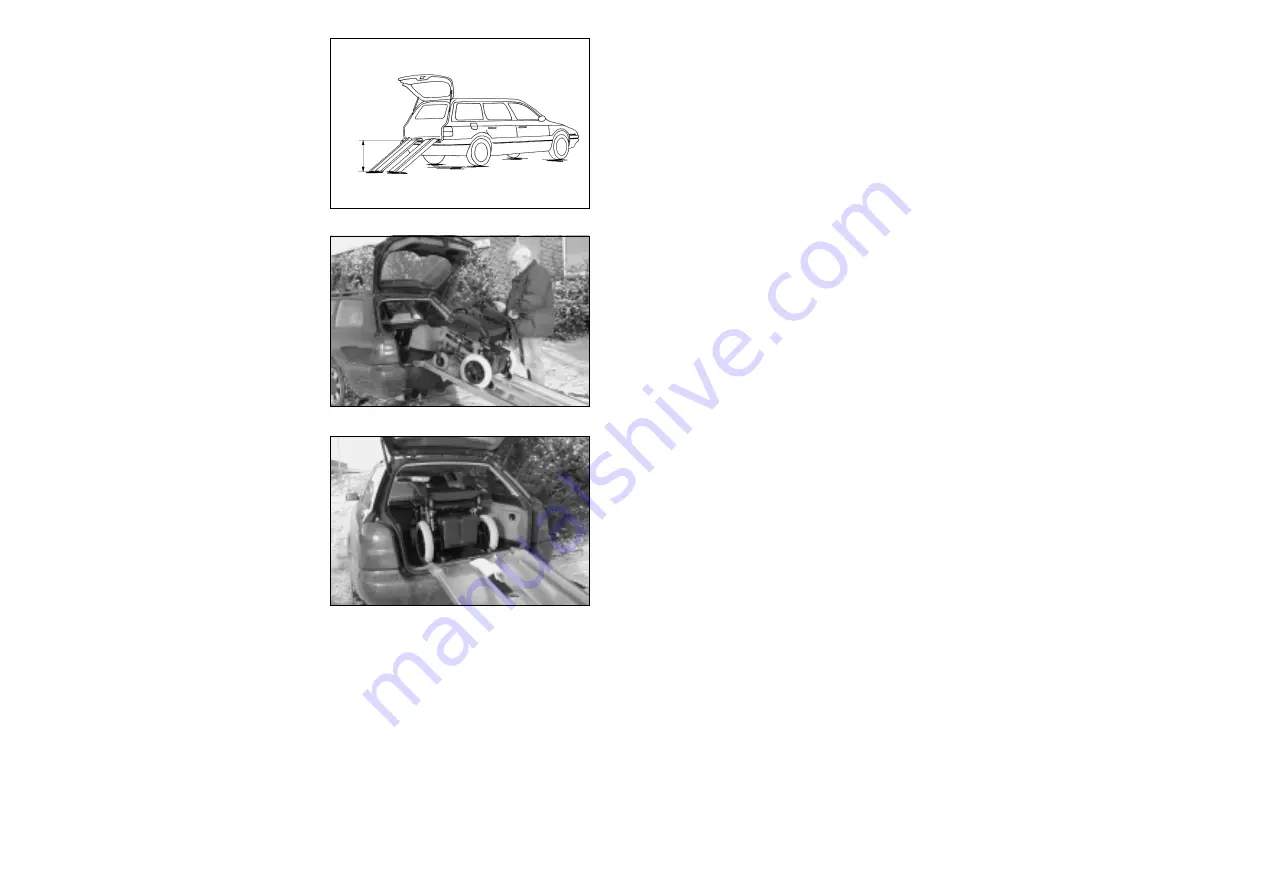
25
24
▲
Only approved ramps or lifting
equipments may be used.
!
Attention:
The loading capacity per ramp or
lifting equipment must be for the
wheelchair:
– greater than 100 kg without driv-
er and
– greater than 250 kg with driver
(fixed ramp)!
Only tested and approved ramps or
lifting platforms intended for
wheelchair loading may be used.
Special safety informations
▲
For safety reasons, the wheelchair
must be unloaded (without bag-
gage and without user) during its
loading into a car or when a split
ramp is used.
▲
Ensure that the wheelchair can roll
back for a short distance (neutral
zone) if forward motion on the
ramp is interrupted or when set-
ting in motion at the bottom of the
ramp.
▲
Cars and vans should be parked on
a level and firm surface with the
handbrake on to prevent them
from rolling away.
▲
Ensure that the ramp cannot slip
at the ground end or at the trans-
port vehicle end.
▲
Ramps should be positioned so as
to leave enough space for wheel-
chair steering correction without
one of the wheels protruding over
the edge of the ramp.
▲
Only use the wheelchair on dry,
clean and undamaged ramps or lift-
ing equipment.
▲
Pre-select the lowest maximum
speed.
RAMPS AND LIFTING
EQUIPMENT
When the wheelchair is loaded with
the help of ramps or lifting platforms,
the following safety instructions are
to be observed:
▲
The brochure <
Safety information
for electric vehicles
>.
▲
The operating manual for the trans-
port vehicle.
▲
The manufacturer’s information for
the ramp or lifting equipment.
!
Attention:
The maximum bearing height spec-
ified for the ramp must be greater
than the height ‘h’ from the ground
to the loading surface, e.g. of the
car (fig. 18).
The wheelchair can be driven into the
transport vehicle over ramps with its
own propulsion power (fig. 19 + 20).
☞
Note:
☞
During the process the operating
module has to be guided accord-
ingly.
☞
Do not pull on the connector ca-
ble.
18
h
19
20


